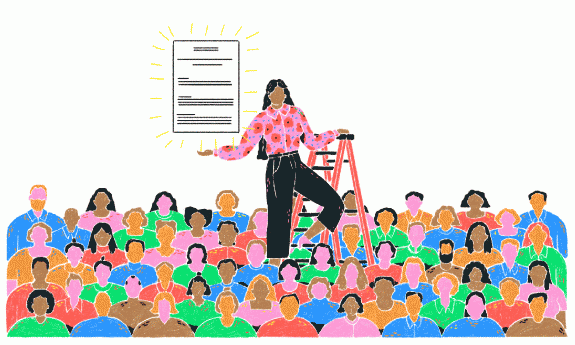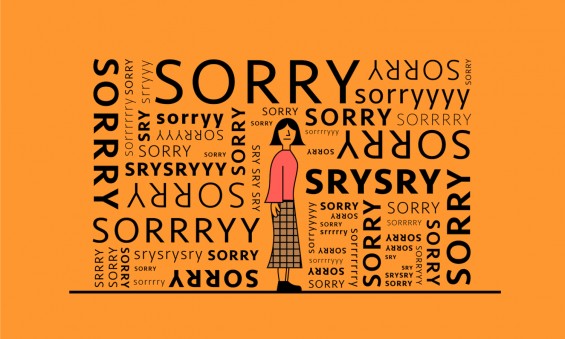
How to write a resume that will get you noticed
It’s believed that the average recruiter or hiring manager will look at your resume for only 6 seconds before making a decision.
While that’s a daunting statistic, there are plenty of things you can do to make those 6 seconds count, says career coach and former recruiter Gail Tolstoi-Miller.
Here’s her advice:
Tailor your resume to each job you apply for
Submitting hundreds of resumes and waiting to see what sticks won’t work — applying for a job is about quality and not quantity, according to Tolstoi-Miller. “There is no such thing as a one-size-fits-all resume,” she explains. “Do your research — look at the job description, go on LinkedIn and look up other people who have been in the job. The more targeted you are, the better off you are.”
And while you can’t change your employment experience — where you worked or what title you held — you can change which of your skills, responsibilities and achievements you choose to highlight.
There’s no right length for resumes
There is no hard and fast rule about length, but please exercise your judgement and restraint (remember that 6-second figure). Most resumes are 2 pages, but for a recent college graduate a single page is fine, and for someone with a 30-year career who’s had jobs at multiple organizations, 3 pages might be more appropriate.
Make its info as easy to absorb as possible
At the top, put a 3 – 4 sentence summary that outlines your work experience and what stage you’re at in your career. This should align with the description of the job you’re applying for.
Next, you want an attention-grabbing bulleted list of skills. While you’re always writing for a human audience, some parts of the recruitment process are automated. “Some recruiters will look at every single resume that goes through the system; other recruiters will just go by what the applicant tracking system will tell them,” says Tolstoi-Miller. “If the application is not ranked at a certain percentage, they’re going to not even give that person the time of day.”
For your human audience, write down all of your relevant skills — emphasis on all. Tolstoi-Miller explains, “Sometimes I see candidates assume ‘Oh, they’re going to know I can do this’, but she could have very little experience with the job you’re applying for and may have no idea how it actually works. Never assume that they know.”
Then, for your automated audience, put in multiple keywords in your skill list to ensure tracking systems pick you up. To identify the keywords, think about how you’d search for this specific role in a database. For example, if you work in HR and use payroll software, list the exact kind that you’ve worked with. Also, consider including phrases that appear in the job description as these might contain keywords that the recruiter will use.
If you’ve been laid off due to COVID-19 or done short-term contract gigs, it’s OK to note this in your resume
Recruiters are wary of so-called “job hoppers” — people who change jobs frequently, according to Tolstoi-Miller. However, this can be unavoidable in the current economy. Her advice: “To alleviate any kind of bias against job hopping, in your resume put in parentheses next to the job ‘company closed’ or ‘contract position’ or ‘downsizing due to COVID-19.’” Even if you worked at an organization or business that went through a public closing or bankruptcy, still do this. You can’t assume that the recruiter or hiring manager will know; like any other person, they have their own blind spots and anything you can do to alleviate those can help you.
Don’t overlook your accomplishments
Remember to list your awards and accomplishments on your resume. “A lot of candidates have a very difficult time speaking to their accomplishments,” says Tolstoi-Miller. “But there’s always something you have done that has helped the organization, and that’s why companies should hire you. If you’re an administrative assistant, for instance, your accomplishments might be efficiency or time management.” She adds, “There are so many other people with the same skills, so what sets you apart? What makes you great?”
Wait, you’re not done! Keep your LinkedIn profile current, too
As opposed to a resume, Tolstoi-Miller says, “The thing with LinkedIn is that you have to do a one-size-fits-all — that’s the challenge. So your profile should reflect the job you really, really want. It should also serve as an extension of your resume. You might show more of your personality or dive a little deeper into some other things that you didn’t have space for in your resume.”
A few housekeeping notes: Many employers will compare your resume to your LinkedIn profile, so the dates and details should match. You should also ensure you have a recent photo, as employers may be wary if you don’t.
Besides overhauling your LinkedIn profile, “you can find other ways to stand out,” says Tolstoi-Miller. Set up a personal website, where you might include a video featuring you. After reviewing thousands of job applications in her career, Tolstoi-Miller finds touches like that refreshing. Or, create a business card to give people when you meet them. These can show your personality and also make you memorable.
Which leads to a final point that Tolstoi-Miller wants to stress:
Networking helps
“Your resume means nothing if it won’t get in front of the right people,” she says. “Recruiters may call you if you have a great resume, but what is going to get you the job is taking it a step further — taking control, networking and reaching out to people that are in a position to hire.”
Watch her TEDxLincolnSquare talk here:
ABOUT THE AUTHOR
Mary Halton is Assistant Ideas Editor at TED, and a science journalist based in the Pacific Northwest.
This post was originally published on TED Ideas. It’s part of the “How to Be a Better Human” series, each of which contains a piece of helpful advice from someone in the TED community; browse through all the posts here.




